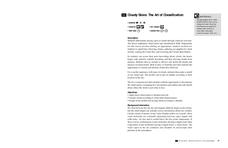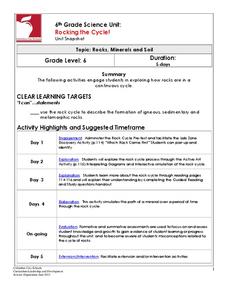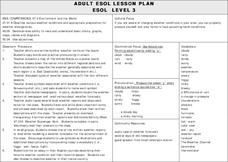Bekshire Museum
Cloudy Skies: The Art of Classification
Such a great resource and perfect for learners in Kindergarten through third grade. The class will discuss cloud types and formation, and then they'll get outside and draw as they observe the clouds they see. They'll need to take note of...
NASA
Erosion and Landslides
A professional-quality PowerPoint, which includes links to footage of actual landslides in action, opens this moving instructional activity. Viewers learn what conditions lead to erosion and land giving way. They simulate landslides with...
Curated OER
Neither Wind Nor Rain
Here is another in the interesting series of lessons that use the special State Quarters as a learning tool. This one uses the North Dakota State Quarter. During this lesson, your class learns about the different patterns of erosion, and...
Columbus City Schools
Rocking the Cycle!
Time to rock out! Discover the "life" cycle of the average rock using an illustrative stations lab and stimulating pairs game. Roll the dice to determine your fate: will it be melting in magma or chilling out to form igneous rock? The...
Curated OER
Clouds and the Earth's Radiant Energy System
Wow! What a lesson plan! Six terrific activities are described in great detail, in this 31-page document! Learners will model and explain cloud formation, sketch and identify certain cloud types, calculate and compare incoming and...
NNF
Floods Happen
Did you know that flooding is the most common natural disaster in the United States? Prepare your learners with the facts about floods and offer them the proper knowledge and tools for dealing with this type of emergency.
Curated OER
Using the Engineering Design Process to Dress for the Weather
Students study weather and define the appropriate dress for various weather patterns. In this weather and clothing instructional activity, students discuss wearing appropriate clothes for specific weather. Students use the weather board...
Curated OER
Weather Conditions
Pupils list and name various kinds of weather conditions occurring in their city. Using the newspaper as a resource, students answer questions relating to written weather reports. This instructional activity is intended for pupils...
Curated OER
Weather Patterns
In this weather worksheet, students define an air mass and describe the different types of weather fronts. Students compare and contrast high pressure and low pressure systems. This worksheet has 4 short answer questions.
Curated OER
Analog Forecasting
Students recognize the elements of an analog weather forecast. In this weather forecasting lesson plan, students use a website and look for trends, persistence and climatology in weather forecasting. Students complete a...
Curated OER
Clouds
In this weather worksheet, students read a detailed information sheet about different kinds of clouds and what weather they bring. Students answer 12 questions
Curated OER
Capturing Wind Energy
Students investigate technology and make a correlation between technology and the weather. In this science lesson, students experiment with the weather and climate using technology to help them understand forces and motion. They identify...
Curated OER
Whose Skin
In this animal skin types worksheet, students complete a chart using names of animals, description of animal's skin, where it can be found and illustrating a picture of the animal's skin.
Curated OER
What's In The Wind?
In this what's in the wind worksheet, students, with a partner, complete four activities involving different types of wind, different types of phrases involving wind and conversation questions regarding homeland weather conditions.
Curated OER
Clouds and the Weather
Fourth graders analyze the relationship of clouds and local weather. Students also observe and record cloud data and weather conditions daily as they research different cloud types. The data is analyzed looking for trends in daily...
Curated OER
Weather
Second graders study the basic components of weather. They construct a thermometer and anemometer to measure temperatures, precipitation, and wind speed. In addition, 2nd graders discover how to find these components on weather maps.
Curated OER
Weather
For this weather worksheet, learners review what causes different weather patterns including the more severe weather patterns like tornadoes and hurricanes. Students also calculate relative humidity by using dry and wet bulb...
Curated OER
Climate Types
For this weather worksheet, students identify the type of vegetation found in particular regions across the United States. Then they list the six groups of climates in the Köppen Classification System. Students also describe the...
Curated OER
Climate and Weather
In this climate worksheet, students read 4 statements about different causes of climate patterns or weather changes. Students write in the effect of these causes in this graphic organizer.
Curated OER
Types of Scientists
In this science worksheet, middle schoolers match each type of scientist listed in the left-had column to its correct description found in the right-hand column. There are 34 different scientists to match on the sheet.
Curated OER
Children's Literature Across the Curriculum Ideas-The Wind Blew
Students read The Wind Blew by Pat Hutchins. They complete a variety of cross-curricular activities surrounding the study of wind and weather. Included are reading, art, math, science, writing, social studies, and library connections.
NASA
S’COOL Cloud Identification Chart
If you've ever wondered why clouds sometimes look so different, look no further than a classroom poster about cloud identification. It features pictures of clouds at high, mid, and low levels of altitude, as well as the name of each...
NASA
Water Works on a Blue Planet
Keep within a water budget. Learners find out that less than 2.5% of Earth's water is available to drink—and that there is a fixed amount of water. Scholars read an interesting article comparing the available water to a game of Monopoly...
Barbara Kowal
Winter Crossword (with Pictures)
This winter, reinforce vocabulary instruction with a crossword puzzle. Scholars examine picture clues to determine its word and plug them into the puzzle. Vocabulary terms include snowball, skate, cold, and more!























